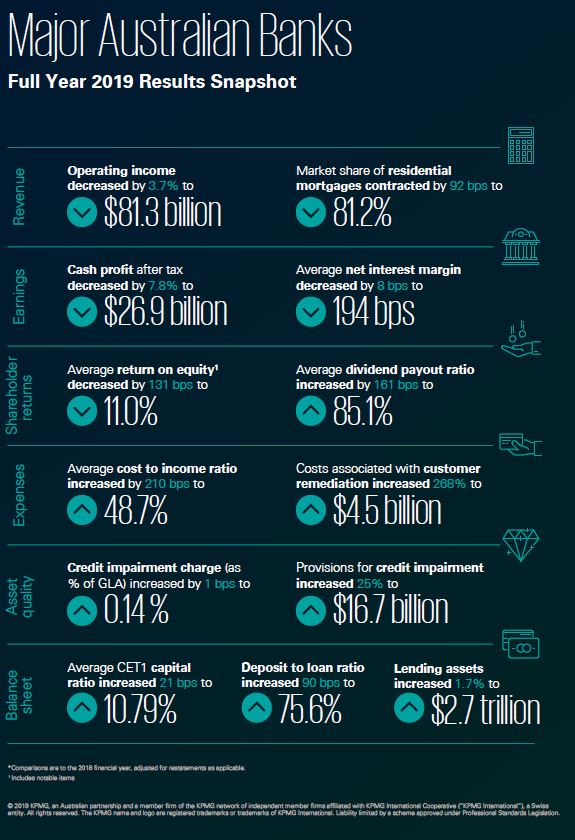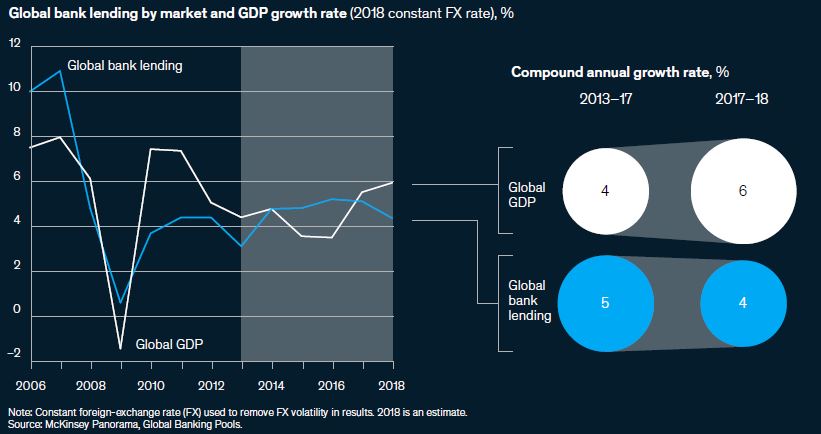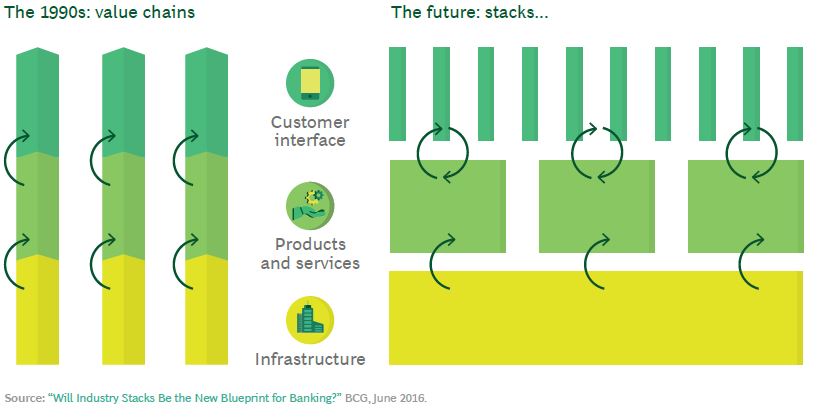-
The Australian major bank profit season has just wrapped and it wasn’t pretty. Cash profits, returns on equity (ROE), net interest margins (NIM), revenue and dividends were all down.
Cash earnings were at their lowest level in seven years, ROEs hit 20 year lows and NIMs fell below 2 per cent for the first time. The benign credit cycle at least persisted meaning bad debt write-offs were stable. Cost management was solid but under pressure.
"At some point too, the economic slowdown will bottom out. While there is no immediate sign of light at the end of the tunnel, consumer confidence will return and businesses will invest.”
These weak numbers were evidence of a lacklustre economy in Australia and a global cooling of interest rates. Other charges were self-inflicted: in the wake of the Royal Commission and other remediation work charges for customer compensation surged.
As ratings agency Fitch summarised: “(We) expect the earnings and profitability of the four Australian major banks to remain under pressure … due to the low interest rate environment, high competition and ongoing costs associated with regulatory compliance and customer remediation. Early signs of a rebound in the housing market and tight cost controls could help to offset some headwinds.”
So not good news for shareholders and also - given banks are essentially leveraged plays on economic activity - a barometer of the ongoing gloom in consumer confidence and business investment.
Bank chief executives favoured “challenging” to describe the operating environment. The reviews from the major consulting first firms were not encouraging: “Even when you strip out (provisions) and look at the underlying performance, the banks have gone backwards,” said Deloitte. KPMG called it a “turbulent” year.
{CF_IMAGE}
Beneficial position?
While bleak, on face value this is a cyclical story. All the banks, although at differing pace, are working through identifying and remediating customer issues while investing in technology to improve compliance (and hopefully productivity).
At some point too, the economic slowdown will bottom out. While there is no immediate sign of light at the end of the tunnel, consumer confidence will return and businesses will invest.
We have seen bank bear markets before, notably following the recession of the early 90s when both Westpac Banking Corp and ANZ Banking Group nearly keeled over. There’s been cyclical downturns since.
But the greater question is when the operating environment for banks improves, will banks be in a position to benefit? Or will someone else?
Fintechs, some might say. Or bigtechs. Maybe. But for reasons well covered in bluenotes previously, those sectors are not likely to deliver the existential blow.
But there are still existential questions to be answered which go well beyond this current economic cycle. They come down to whether the universal banking model is the right one for the future.
Simplification
Two decades ago, it was assumed the traditional model of wholesale and retail banking, taking deposits, making loans and facilitating payments wasn’t enough. So banks bought wealth management and life insurance businesses because there was perceived to be synergies and greater growth in the market for wealth creation.
That was wrong. The earnings never materialised and the reputational risk was graphically illustrated in the Royal Commission.
Now the big four Australian banks - and multiple banks globally - are simplifying. This bank, ANZ, was early into the process. It makes sense. Simpler business models are more focused, less prone to complexity errors and lower cost.
Yet that may not be enough. McKinsey & Co’s latest global review of banking paints a pretty dire picture.
“Banks in developed markets have strengthened productivity and managed risk costs, lifting ROTE (return on tangible equity) from 6.8 per cent to 8.9 per cent. But on balance, the global industry approaches the end of the cycle in less than ideal health with nearly 60 per cent of banks printing returns below the cost of equity,” the firm found.
“A prolonged economic slowdown with low or even negative interest rates could wreak further havoc.”
{CF_IMAGE}
So what’s the secret? According to McKinsey: “In short, geography, scale, differentiation, and business model”.
Rival consultants The Boston Consulting Group envisage a more radical re-shaping of business models around what they term “stacks”. This stack model undermines the traditional attraction of vertical integration.
“For example, at the top of the stack, companies that offer better (or more attractive) customer interface options can provide consumers with a broad variety of financial and other services through ecosystems, without having to develop their own banking products and infrastructure,” BCG said in its new report, Global Retail Banking 2019: The Race for Relevance and Scale.
{CF_IMAGE}
Whether you favour McKinsey or BCG, their proposals are easier said than done, particularly on the revenue front. With the global - and Australian - economy still weak, businesses remain nervous.
Economic hope
Senior executives in both banking and non-banking worry interest rate cuts, designed to stimulate business and household spending, are instead spooking people.
There are technical economic debates too which play into this. Reserve Bank of Australia governor Philip Lowe believes business has not accepted we are in a lower inflation, lower interest rate world and the hurdle rates of return expected on investments should be lower.
If business starts to agree then suddenly the opportunity for investment would be bigger - and so too hope for the economy.
Lowe sketched out his thinking on why this wasn’t happening in a recent speech.
Looking for reasons why hurdle rates hadn’t come down - and investment gone up - he said “the first is that the reduction in the cost of borrowing has been offset by a rise in the required risk premium due to the uncertainties that I spoke about”.
“If this were so, the hurdle rate would be unchanged, with lower interest rates just compensating for the riskier environment,” he said.
“The second possibility is that some firms have been slow to adjust to the new reality of low interest rates. We hear reports that a hurdle rate of return of 13 to 14 per cent has been hard-wired into the corporate culture in some companies. Changing this hard-wiring is difficult and time consuming.
“However, from our liaison with Australian companies, we do know that some companies have lowered their hurdle rates and this is opening up new opportunities for them. It would be good to hear more such reports.”
As a true economist, Lowe offered two hands: “My view is that there is an element of truth to both explanations: risk premiums have gone up and, in some cases, hurdle rates of return are too sticky.”
ANZ CEO Shayne Elliott echoed Lowe at the annual result presentation, saying ANZ believed its cost of capital and fallen from around 10 per cent to 8.5. The bank is doing more work on this but is also - reflecting the role of banks as hand-maidens to industry - discussing the implications with customers.
The response of the business community to this new, lower cost, lower risk world is cautious - particularly from those businesses investing in assets with multi-decade return profiles.
Yet property developer Dexus reviewed its last decade of investment decisions and found it should have actually invested in every opportunity that was presented. With the benefit of hindsight, the investment hurdles were too high.
Even if this new paradigm plays out however the impact on bank revenues - through more lending for investment - would not be shattering. And will take some years to play through.
In the meantime, the evidence of this latest reporting season is indeed the outlook is challenging.
Andrew Cornell is Managing Editor of bluenotes
The views and opinions expressed in this communication are those of the author and may not necessarily state or reflect those of ANZ.
-
-
-
anzcomau:Bluenotes/global-economy,anzcomau:Bluenotes/Banking,anzcomau:Bluenotes/business-finance
2019 bank profits: challenging, backwards, turbulent
2019-11-13
/content/dam/anzcomau/bluenotes/images/articles/2019/November/CornellProfits_banner.jpg
EDITOR'S PICKS
-
Everything you need to know about ANZ’s 2019 full-year result in one place.
31 October 2019 -
According to the headlines, Australia’s economy is despairing. But is it all as bad as it seems?
9 September 2019



